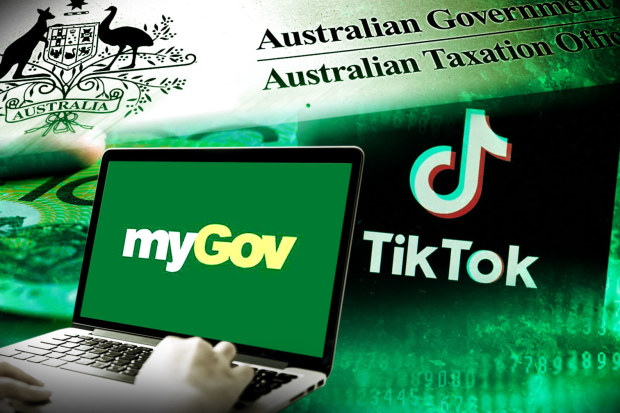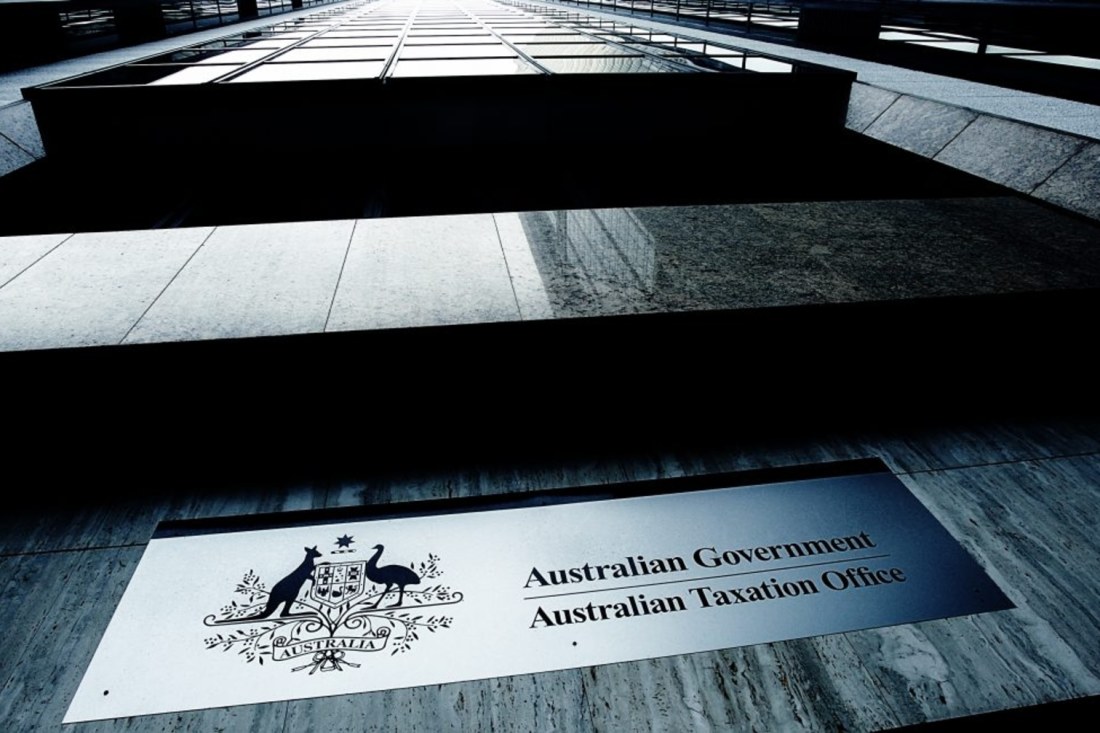Correcting the record on Operation Protego
ATO blames influencers after scam netted $1.2 billion in fake GST claims
ATO secrecy review expanded to cover TikTok fraud
A Treasury review into secrecy laws that bind the Tax Office will consider the fallout from a $1.6 billion tax fraud scheme executed via TikTok, as federal Labor promises enhanced rules to protect taxpayers.
Assistant Treasurer Stephen Jones said the government was deeply concerned at revelations the fake GST claims scheme went viral on the social media platform, reaching a monetary total that is twice previous reports and represents the biggest tax fraud in Australian history.

TikTok says it co-operated with the Tax Office to permanently ban more than 60 accounts that promoted GST fraud.
The fraud was uncovered by the banks, which froze accounts and alerted the Tax Office. The ATO said strict taxpayer secrecy laws limited what it could share about its investigation into the fraud, which was ongoing from 2020.
“We’re also going to have a broader look at the tax secrecy laws,” Mr Jones told The Australian Financial Review late on Monday.
“They’re important, but we want to ensure that they’re not being used as a shield against the Commonwealth tracking down and responding to fraud in a legitimate way, like any organisation would want to protect itself.”
ATO secrecy review expanded to cover TikTok fraud
A Treasury review into secrecy laws that bind the Tax Office will consider the fallout from a $1.6 billion tax fraud scheme executed via TikTok, as federal Labor promises enhanced rules to protect taxpayers.
Assistant Treasurer Stephen Jones said the government was deeply concerned at revelations the fake GST claims scheme went viral on the social media platform, reaching a monetary total that is twice previous reports and represents the biggest tax fraud in Australian history.

TikTok says it co-operated with the Tax Office to permanently ban more than 60 accounts that promoted GST fraud.
The fraud was uncovered by the banks, which froze accounts and alerted the Tax Office. The ATO said strict taxpayer secrecy laws limited what it could share about its investigation into the fraud, which was ongoing from 2020.
“We’re also going to have a broader look at the tax secrecy laws,” Mr Jones told The Australian Financial Review late on Monday.
“They’re important, but we want to ensure that they’re not being used as a shield against the Commonwealth tracking down and responding to fraud in a legitimate way, like any organisation would want to protect itself.”
TikTok said it had permanently banned more than 60 accounts and removed hundreds of videos which triggered the fraud and the illegitimate payouts.
In one of the TikTok videos last year by social influencers who promoted the scam, viewers were told, “Everyone else got refunds, it’s OK, it’s just a temporary loan [from the government].”
At least 56,000 people participated in the scam, which involves individuals obtaining an Australian Business Number, then using their MyGov account to file fraudulent business activity statements to claim GST refunds which in some cases exceeded $100,000.
Mr Jones praised officials involved in Operation Protego, launched to pursue the fraud on April 11 last year. The Australian Federal Police have since conducted a series of raids that have led to more than 100 arrests, including three senior members of the Hells Angels motorcycle gang.
There has also been compliance action against 56,000 people, mostly operating under the radar.
Deputy Commissioner Will Day told The Financial Review that Operation Protego had stopped $2.7 billion in fraudulent refunds since April 2022.
The Tax Office has limited prospects to recover another $1.6 billion paid out in response to fraudulent claims. It has charged $300 million in penalties and interest on this debt, taking the total for the fraud to $4.6 billion at June 30.

Labor senator Deborah O’Neill said threats to subvert the tax base were a national security issue. Alex Ellinghausen
“After being contacted by the ATO, TikTok’s trust and safety team conducted an investigation to identify and remove content that looked to provide instructions related to the issue,” a TikTok spokeswoman said in a statement on Monday.
“As a result of this, and our later proactive efforts, over 60 accounts were permanently banned and a few hundred videos removed for breaching our frauds and scams policy.
“More than 40,000 trust and safety professionals and advanced machine learning tools continue to monitor for any content that violates our Community Guidelines. Frauds and scams are an evolving challenge globally and TikTok continues to play its part to combat these, including in partnership with government and law enforcement agencies.”
Variants of the GST fraud scheme have continued to evolve, while seeking smaller amounts in an apparent bid to avoid triggering ATO surveillance alerts. Less sophisticated posts made to TikTok as recently as this month appear to have been generated by AI.
‘Grave national security concern’
Labor senator Deborah O’Neill said threats to subvert the tax base were a national security issue.
“Today’s reporting on the viral TikTok ATO fraud, along with previous reporting by the Senate on the PwC affair, further crystallises the threats that the Australian public faces from nefarious actors who wish to subvert Australia’s basic functions of collecting taxes and paying its bills,” she said.
“This is a grave national security concern. GST collection and dispensation is crucial for states and territories to continue to fund hospitals, schools and disaster responses and it is necessary that the ATO has control over this revenue stream.”
The AFP has made more than 100 arrests in the Protego investigation including three senior members of the Hells Angels, with the Parramatta chapter president and an associate arrested earlier this month, following the arrest of an alleged secretary and treasurer of the Hells Angels Chinatown chapter in February.
The three have been charged with conspiracy to defraud the Commonwealth and other crimes including dealing with the proceeds of crime.
“This is nothing new but it’s highly embarrassing for the ATO,” a senior tax professional commented. “Obviously, it exposed the vulnerability in the systems.”
Tony Greco, the Institute of Public Accountants general manager for technical policy, said: “This was always going to happen, it was just a matter of time. It has exposed a vulnerability in the system I’ve been talking about for five years.
“That’s $2 billion of wasted taxpayer money, and an easy fix that would help accountants improve the integrity of the tax system.
“It was dead easy. You apply for an [Australian Business Number] and you effectively lodge a claim.”
Mr Greco called for a two-speed approach, where tax agents in effect could help vet applications and secure a quick response, while the ATO would take more time to thoroughly vet individual applications.
The Tax Office denied delaying its response to the TikTok fraud.
“We became aware of an increase in referrals from banks in late 2021 which escalated in early 2022,” the ATO said in a statement on Monday. “We took immediate action.”
On Friday Mr Day said that “by late February 2022, we had dialled up our efforts to put a stop to these fraudulent attempts to a ’10′ out of 10′. We pushed our efforts to an ‘11’ when we commenced Operation Protego [in April].
“This was an unprecedented threat proliferated via social media and is now contained.”
The ATO’s position is that the number of claims has been reduced from the peak, when thousands of fraud claims were being lodged every day, to a lower rate.
The Tax Office also appeared to target accountants who had expressed concerns to the Financial Review that the fraud was ongoing. The accountants requested anonymity because of concerns of retaliation by the ATO.
“We also continue to monitor for any tax agents facilitating clients to participate in this fraud,” the ATO statement said. “We expect that any tax or BAS agent that becomes aware of a client that has participated in fraud to notify the ATO immediately.”
Accountants who spoke about the fraud said that they had informed the ATO whenever they saw that a client or potential client who had obtained fraudulent GST refunds had not been detected by the Tax Office.
Find out the inside scoop about Accenture, Deloitte, EY, KPMG, PwC and McKinsey. Sign up to our weekly Professional Life newsletter.
TikTok GST fraud hit on Tax Office blows out to $4.6b

The Tax Office has admitted paying out more than $1.6 billion in fake GST claims as part of a $4.6 billion fraud based on a simple scheme promoted on social media platform TikTok – a total that is twice previous reports and the biggest tax fraud in Australian history.
The fraud was uncovered by Westpac and other banks, some of which passed on a series of alerts to the Tax Office from 2020. But after being frustrated by the apparent lack of action by the Tax Office, some bank staff shared their concerns informally with the Reserve Bank, which then alerted Treasury and the Tax Office in February last year.

ATO deputy commissioner Will Day.
The Tax Office launched Operation Protego to pursue the fraud on April 11 last year, and the federal police have since conducted a series of raids that have led to more than 100 arrests. There has also been compliance action against 56,000 people. Yet, the ATO has operated largely under the radar.
“We have stopped in the order of $2.7 billion in fraudulent refunds and raised liabilities in the order of $1.9 billion, as at 30 June 2023,” deputy commissioner Will Day, who heads Protego, told The Australian Financial Review.
He said the liabilities included $300 million in penalties and interest.
Accountants in western Sydney, where the fraud went viral in mid-2021, said new examples continued to show up as clients filed their tax returns, which shows that the fraud continues.
From late 2020, banks noticed a wave of suspicious transactions where customers on social benefits had received large business payments – in some cases more than $100,000 – from the Tax Office.
The banks froze the accounts and notified the Tax Office about the transactions, but became increasingly frustrated when the Tax Office took no action against the accounts.
How the scam worked
The Tax Office’s position is that it could not tell the banks what it was doing because of taxpayer secrecy laws. However, there was disagreement within the Tax Office over which section would handle the matter.
From mid-2021, the fraud exploded as social media influencers on TikTok explained to their followers how to obtain a “loan” from the government.
The scam involved people obtaining an Australian Business Number or ABN, then using their MyGov account to apply for GST refunds on huge fictitious expenses they claimed to have incurred in setting up their new business.
Although the Tax Office at first reported that the average amount claimed was $20,000, accountants in western Sydney told the Financial Review that among their clients, the average amount raised from the fraud was more than $80,000.
The Tax Office’s prevention measures were overwhelmed as the fraud went viral, with thousands of people making false claims for refunds each day.
By early last year, the banks, which were collaborating with the FinTel alliance set up by Austrac to scope out the size of the fraud, were desperate about what to do with the frozen accounts, in the face of apparent inaction by the ATO.
“We notified the ATO, and they didn’t want anything to do with it,” a bank executive told an adviser.
Several bank executives reached out informally to the Reserve Bank, which met with the Tax Office in mid-February last year.
The banks and the RBA referred media questions to the Tax Office and deputy commissioner Day denied any inactivity by the ATO.
“When our combined intelligence first discovered the rapidly escalating fraud attempts in early 2022, we swooped in quickly,” he said.
“By late February 2022, we had dialled up our efforts to put a stop to these fraudulent attempts to a ’10 out of 10’. We pushed our efforts to an ‘11’ when we commenced Operation Protego.”
In May last year, the Tax Office said Protego was launched after “sophisticated risk models deployed by the ATO, coupled with intelligence received from banks including through the Austrac-led Fintel Alliance and the Reserve Bank of Australia, identified a recent spike in suspicious refunds”.
Initially, the Tax Office claimed that $850 million was paid out on the false claims, with more than $1 billion in further claims stopped by Protego. It had recovered $66 million, mostly from accounts frozen by the banks.
The Tax Office’s annual report for last year noted that “in many cases recovery of refunds already issued will not be routine due to the fraudulent nature of activities and the financial position of many of the perpetrators”.
Last February, it reported that it had stopped $2.5 billion of claims but made no reference to how much had been paid out.
The latest total includes limited investigation of the fraud before last year.
“Our initial focus was on stopping fraudulent refunds before they were issued,” Mr Day said.
“When we identified taxpayers who had made multiple attempts to participate in this fraud, even after we had declared Operation Protego, we looked closely at their previous lodgment history and, in some instances, discovered prior offending. We took action against this fraud too.
“We’ve seen a significant slowdown of fraud attempts in the recent months,” Mr Day said.
‘Absolutely rampant’: How the ATO missed a $4.6b crime wave
Influencers on TikTok are being blamed for an explosion of fraudulent GST claims that banks and accountants say went unchallenged for years.
An explosive wave of fraud that has shaken the Tax Office’s GST system had been building for months before accountants began to notice early last year. By then it was everywhere and no one wanted to talk about it.
“I started seeing it through the office about March of 2022, a few people came in with business files with the ATO – these really large credits going out, big, big credits, unusual credits,” a western Sydney accountant told The Australian Financial Review.
“It didn’t prick my attention. Then I saw a few more, and a few more, and a few more. It kept growing. Tax time came [from July 2022] and it was rampant, absolutely rampant.”

The fraud is a simple one that involves individuals using their MyGov account to claim refunds on GST payments that were never made. Louie Douvis
By then, accountants around Australia were realising that the country was in the thick of a multibillion-dollar explosion of GST fraud that had gone viral. It’s the crime wave the Tax Office didn’t see coming.
How big a crime wave? “The inside word among tax officers is $4.6 billion – that is insane,” says the accountant, who like others spoke to the Financial Review on condition of anonymity. “Everyone’s too scared to go up against the ATO.”
The Tax Office has confirmed the $4.6 billion figure, which seems likely to be an underestimate.
It was “the biggest tax revenue fraud against the community in the history of the ATO”, deputy commissioner John Ford said in a speech in May.
The fraud is a simple one that involves individuals using their MyGov account to claim refunds on GST payments that were never made.
While the fraud may be simple, piecing together this invisible crime wave raises questions about why the Tax Office took so long to catch on.
And now it’s tax time again. While the Tax Office insists it has the fraud under control, accountants in western Sydney are painting a darker picture.
“They keep changing [the scam],” an accountant says. “I saw more clients today that [the ATO] didn’t pick up. One guy got $50,000, then another $35,000, then another $25,000.
“He hasn’t had to pay it back. He got this at the end of 2022. This isn’t being picked up as fraudulent activity.
“I’ve seen two more already this morning. One has a debt of $18,000. He tried to get more but was stopped eventually by the ATO.”
A client received $130,000 from fraudulent claims in July 2022 and was not picked up until December. Another client was paid $60,000 last September. How did it get to this?
Banks had been warning the Tax Office about a rising pattern of GST fraud – and freezing suspect accounts – from late 2020. They became increasingly frustrated by the apparent lack of action by the ATO, as they were faced with the decision of what to do with the frozen accounts.
“We notified the ATO, and they didn’t want anything to do with it,” a bank executive told an adviser.
While none of the banks was prepared to talk about the scam, in one example Westpac’s digital fraud team was alerted to a suspect transaction by their anti-money-laundering software in February 2022.
A customer with a long history of welfare benefits had deposited a business tax refund for tens of thousands of dollars from the ATO.
The digital fraud team passed the alert to the bank’s financial crime and fraud protection division and the Tax Office was notified. But the Tax Office took no apparent action.
Westpac, like other banks, made the critical decision to look for other similar deposits from Tax Office payments and began freezing accounts as it found more than 1000 customers linked to suspicious transactions.
The Tax Office’s position is that it couldn’t share what it was doing because of taxpayer secrecy, but within the agency there appears to have been disagreement over which section should handle the investigation.
The fraud was terrifyingly simple. Anyone with some ID could apply for an Australian Business Number (ABN), then use their MyGov account to register a fictitious business with the GST regime.
A June 2023 raid under the ATO’s Operation Protego.
Once registered, the new “business owner” would submit a fictitious business activity statement in which they claimed to have spent a huge amount of money setting up the business. They immediately applied for a refund on the 10 per cent of these fictitious expenses which was GST.
That was all it took. In most cases, there were no questions asked, or alarms raised in the Tax Office’s GST system – just a payout on all claims within 12 business days.
In a typical case, an accountant working on a 2023 tax return for a client noticed that he had a business, which the client denied.
“But you’ve lodged an activity statement,” the tax agent said after looking at his MyGov account. “You’ve claimed you spent half a million dollars buying equipment.”
“Yep, so I did,” said the client, who ended the interview and walked out. By claiming that he had spent $500,000 on new equipment he was able to say he was entitled to be repaid the $50,000 GST component of the purchase price.
By mid-2021 the fraud was exploding as social media – in particular TikTok – was full of explainers how to get a “loan” from the government.
In one example cited to the Financial Review a man claimed a $50,000 GST refund in August 2021, then raised another $50,000 several months later. It was only when he tried it again last May that the Tax Office caught up with him.
The Tax Office says the average claim was $20,000, but a rough survey by accountants in western Sydney of more than 100 participants in the fraud put the average payout at $84,000. While many were on social security, “there are also people that have incomes, there’s a really broad range of people,” an accountant says.
Through 2021 the banks were using the FinTel alliance set up by AUSTRAC to share information. By early 2022 they were frantic about what to do with the frozen accounts, with no indication the Tax Office was taking action.
At this point several bank executives contacted the Reserve Bank informally to express concern about the rising fraud.
The RBA met tax officers in mid-February last year. The Tax Office insists it then moved “swiftly and decisively”.
“When our combined intelligence first discovered the rapidly escalating fraud attempts in early 2022, we swooped in quickly,” Deputy Commissioner Will Day, head of small business, told the Financial Review.
“By late February 2022, we had dialled up our efforts to put a stop to these fraudulent attempts to a ’10 out of 10′. We pushed our efforts to an ‘11’ when we commenced Operation Protego [in April].”
While the Tax Office has referred to using artificial intelligence and sophisticated algorithms to identify the false claims, it arguably had as much to do with brute force, boosting the 170 ATO staff who previously handled fraud to more than 600, in effect playing whack-a-mole with the GST claims.
By May, Operation Protego was reporting $850 million of fraudulent payments to 40,000 people. By June, the estimate was $1 billion in payouts and up to 70,000 people involved.
By August, the Tax Office annual report said, tax officers had blocked $1.9 billion in claims and raised $1.2 billion in liabilities.
But while senior tax officers confidently reported last September that the fraud was under control, the numbers have continued to grow.
Deputy commissioner Day, who runs Protego, says that as of June 30 this year, “we have stopped in the order of $2.7 billion in fraudulent refunds and raised liabilities in the order of $1.9 billion”.
He says this included $300 million in penalties and interest. The 8.54 per cent general interact charge appears to account for most of this.
“I haven’t seen any penalties, not one,” says one accountant.
The Tax Office says Operation Protego has resulted in a significant slowdown of fraud attempts, but tax agents says they are seeing new cases every day.
Remarkably, while fraud generally involves identity theft to provide a false name, people are committing the GST fraud under their own names. Once caught they are left with a huge and increasing tax debt – which means an end to any future tax returns.
“In the worst case you will go to jail,” says Day.
Along with the 56,000-plus people caught up by Protego is a trail of personal disaster among some of Australia’s poorest communities.
“One of the men with really high debt ended up having a heart attack,” the accountant says.
“We had a mother and son in the office this week. He’s got a $50,000 debt on his MyGov account. His mother was horrified. So where’s the 50 grand gone?
“This is standard, this is what we’re seeing every day. A few clients I think didn’t mean to do it and got caught up, tried to pay it back, tried to fix it. But their accounts have been frozen so they can’t.”
The ATO’s problems with GST date back to 2011 when an importer called Multiflex successfully challenged the Tax Office’s decision not to pay GST claims that the business was being audited.
The case prompted a change in the law to overcome the court’s findings. The new law enables the ATO to suspend GST credits but only if it’s reasonable to require verification, for example if there’s a likelihood of fraud.
The Inspector General of Tax, Ali Noroozi, in a 2016 report said the ATO was committed to finalising 94 per cent of electronic activity statements within 12 business days. Of 2.5 million BAS statements lodged in 2016 the ATO queried only 28,000, and only 5090 required any adjustment. That’s one in 500.
Noroozi, now a PwC partner, noted that “the ATO’s own review found that at least part of the risk assessment systems yielded results no better than random selection”.
The ATO has strengthened its algorithms since then, but its systems didn’t have the capacity to detect and flag more than 56,000 fraud cases in a six-month period.
In all my years I’ve seen nothing like it.
— Sydney accountant
The ongoing fraud “is being driven by the open promotion of fraud on social media platforms”, deputy commissioner Ford said in May.
“These social media influencers – I prefer fraud promoters – actively glamourise their lifestyles and the luxury assets they buy from theft from the community.
“What they are actually influencing, though, is exactly that, theft from health, education and defence and the broader community.”
There’s reason to suspect the total is higher than the $4.6 billion figure the ATO is citing – as more previously unreported payouts come to light. Protego has done limited investigation of fraud claims made before 2022.
Meanwhile, tax agents point out that the TikTok fraud was made possible by introduction of the MyGov app, which allows individual taxpayers to make the false refund claims directly rather than through a business portal.
“MyGov has given them a platform to defraud the government of $4.6 billion,” says the accountant.
Ford is upbeat. “We’ve seen a significant slowdown of fraud attempts in the recent months,” he says.
The view from the west is less sanguine.
“This is every day. Every day there are new cases,” the accountant says. “In all my years I’ve seen nothing like it.”


